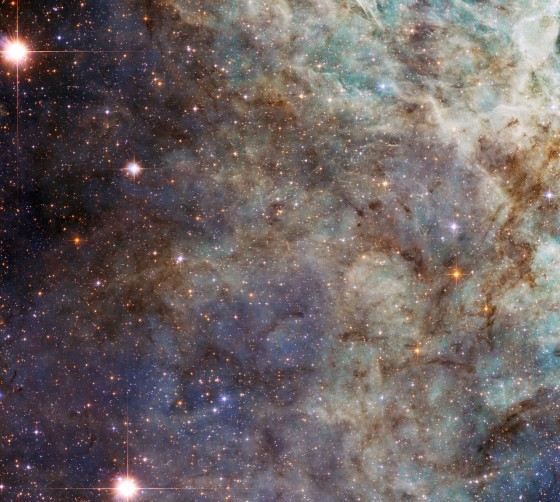The TARANTULA NEBULA is shiny cosmic web of awesome.
Yeah, yeah. I’ve been slacking on the space porn lately, and for that I fall upon my blade. It pierces the jittery remnants of my heart, propelling me into action. Wait, how can I do that when I’m dead? Guilt motivates the corpses. Powerful agent.
Bad Astronomy:
The nebula is thick with warm hydrogen gas, lit up by the stars embedded in it. In reality this gas glows red, but the filters used to make this image were unusual – they include one that lets through infrared light, which in this picture is colored red. So here the hydrogen has been given a green tint. You can see lots of dark dust strewn about, too. What astronomers call dust is actually more like soot; big molecular chains of carbon that form tiny grains roughly the size of those in cigarette smoke. It’s very thin, but we see through so much of it that the light from stars and glowing gas behind it gets absorbed.
The Tarantula nebula is huge beyond comprehension: it’s 650 light years cross, or nearly 7 quadrillion kilometers (4 quadrillion miles) in size. This image, full of complexity, chaos, and structure down to the smallest scales, represents only about 6% of the entire nebula. I spent quite some time studying this nebula and some of the objects in it – like Supernova 1987A – and it still gives me chills. Space is huge.
By the way, this image was created by Judy Schmidt using archived observations as part of the Hubble’s Hidden Treasures project, to find older, perhaps less well-known pictures, and breathe new life into them. I’d say she did a great job! Go to that link and peruse the others there; trust me, you’ll be glad you did.
Outstanding.




